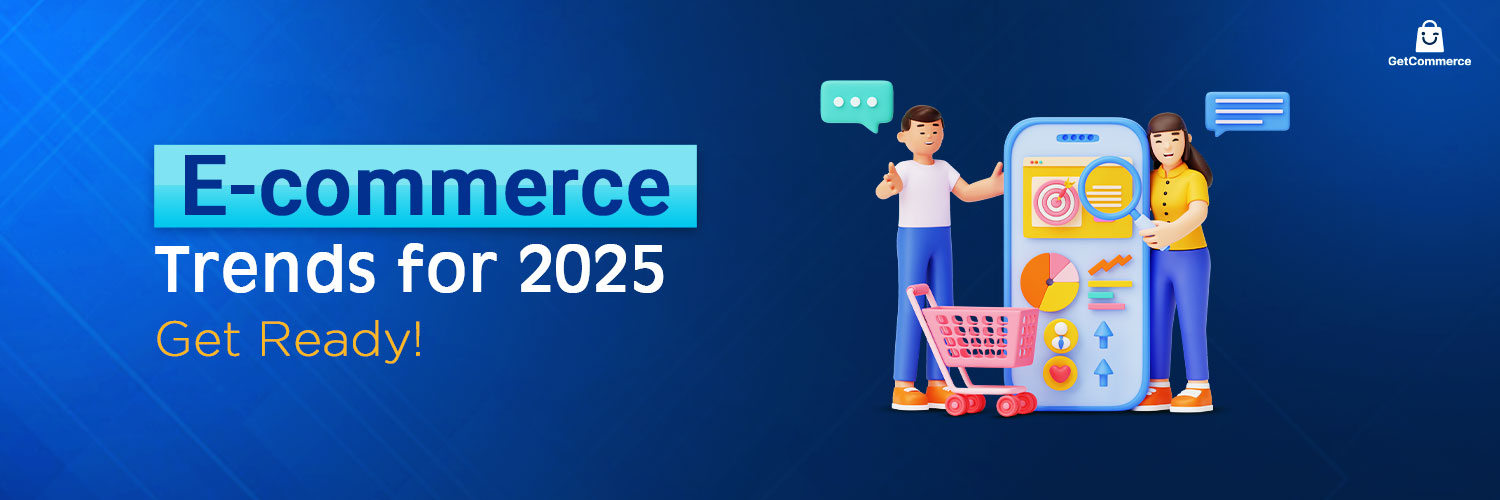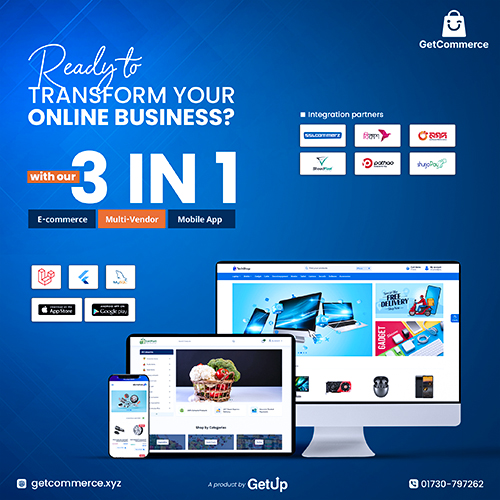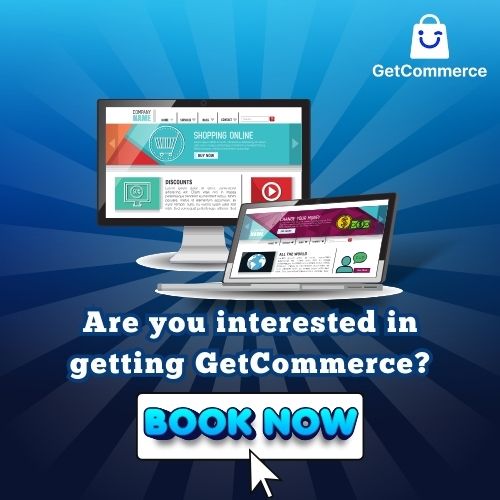Did you know that over 2.14 billion people worldwide are expected to shop online by the end of 2023? That’s a massive audience just waiting for businesses to offer them the convenience of online shopping. In today’s fast-paced digital landscape, e-commerce development isn’t just an option—it’s a necessity for businesses aiming to stay competitive and fuel growth. Whether you're a small startup or an established brand, the ability to sell online can open doors to a vast, global market, 24/7. But it’s not just about setting up an online store—it’s about creating a seamless shopping experience that attracts, engages, and retains customers.
In this article, we’ll explore why e-commerce development is a key driver of business growth, revealing how businesses can harness digital platforms to expand their reach, improve customer interactions, and ultimately increase revenue. Get ready to uncover the powerful impact e-commerce can have on your business’s success.
The Role of E-commerce in Digital Transformation
E-commerce development is a major force behind digital transformation, helping businesses improve efficiency, offer better customer experiences, and grow in a digital world.
What is Digital Transformation and How Does E-commerce Play a Role?
Digital transformation is the process of using technology to improve and streamline every part of a business. It’s about moving away from traditional methods and embracing digital tools to stay competitive. This transformation helps companies adapt to changing customer expectations, improve efficiency, and offer more personalized services.
E-commerce is a key part of this digital shift. As businesses invest in e-commerce development, they’re stepping into a world where technology drives success. With advancements in e-commerce platforms, businesses can reach more customers, offer better user experiences, and streamline their operations. From improving website performance to using data for better decision-making, e-commerce helps businesses stay ahead in a digital-first marketplace.
For businesses aiming for digital success, e-commerce is essential. It allows companies to expand their reach, operate 24/7, and connect with customers in new ways. This isn't just for large companies; even small businesses can use online business expansion strategies to grow quickly and compete on a larger scale.
Key Benefits of E-commerce for Business Growth
E-commerce offers businesses numerous advantages, from global reach and cost savings to personalized customer experiences and data-driven insights. Whether you're a small business or a large enterprise, investing in e-commerce can help you unlock new growth opportunities and stay ahead of the competition.
Unlocking Growth Through E-commerce
E-commerce has revolutionized the way businesses grow and thrive. By embracing e-commerce development, businesses can expand their reach, reduce costs, and provide a better customer experience—all of which are critical for sustainable growth. In today’s digital world, where online presence is essential, e-commerce plays a key role in achieving digital success and staying competitive.
Let’s break down the key benefits of e-commerce for business growth:
Access to a Larger, Global Customer Base
E-commerce allows businesses to reach customers around the world, 24/7. Unlike traditional retail stores that are limited by location and hours, an online store is always open. This means businesses can tap into new markets and attract customers from different regions without the restrictions of a physical storefront.
Reduced Overheads and Operational Costs
Running an e-commerce business is often more affordable than operating a physical store. With no need for a physical location, businesses save on rent, utilities, and in some cases, staffing costs. These savings allow businesses to reinvest in other areas, like digital marketing, to drive more sales and revenue increases.
Enhanced Customer Engagement and Personalization
E-commerce platforms offer tools that help businesses create personalized shopping experiences. Automation tools like AI-driven product recommendations and chatbots enable businesses to engage customers in real-time, providing tailored experiences that improve customer satisfaction and build loyalty. This personalized engagement contributes to digital marketing success, leading to repeat sales and higher conversion rates.
Scalability and Flexibility for Growth
E-commerce platforms allow businesses to scale quickly. As demand increases, businesses can easily upgrade their online store, add new products, and even expand to new markets without the need for significant capital investment. This flexibility makes e-commerce an ideal choice for businesses looking to grow without being limited by physical constraints.
Data-Driven Insights for Smarter Decisions
E-commerce provides valuable data about customer behavior, sales trends, and product performance. This data helps businesses make informed decisions, from adjusting marketing strategies to managing inventory. By analyzing this information, businesses can refine their e-commerce strategies and improve overall performance.
Competitive Advantage in Emerging Markets
E-commerce is growing rapidly in emerging markets, where more people are turning to online shopping. By investing in e-commerce development, businesses can gain a competitive edge in these fast-growing regions, reaching new customers and expanding their market share.
E-commerce Development Strategies for Expanding Online Presence
To drive business growth and strengthen your online presence, it’s crucial to adopt the right e-commerce strategies. Whether you're just starting or already have a well-established online store, focusing on e-commerce development is key to staying competitive in today’s market. These steps will help you enhance your online business expansion and boost customer acquisition.
Step 1: Make Your Website Mobile-Friendly
-
Why it matters: With mobile shopping on the rise, ensuring your website is mobile-optimized is critical for reaching a broader audience. A website that is easy to navigate on smartphones leads to higher customer satisfaction and conversion rates.
-
What to do: Invest in responsive web design that adjusts to various screen sizes. Test your website on different devices to ensure it’s fast, easy to use, and visually appealing.
-
What you’ll gain: By offering a seamless mobile experience, you’ll attract more mobile shoppers and reduce cart abandonment. This helps with conversion rate optimization and can increase your overall revenue from mobile sales.
Step 2: Use Data and AI to Connect with Customers
-
Why it matters: Data analytics and AI technology play a significant role in understanding customer behavior and preferences. With this knowledge, you can offer more personalized product recommendations, which improves customer acquisition and boosts engagement.
-
What to do: Implement tools to track visitor behavior, such as purchase history, browsing patterns, and preferences. Use this data to deliver tailored marketing campaigns and personalized product suggestions.
-
What you’ll gain: By offering a personalized shopping experience, you’ll enhance customer satisfaction, increase repeat purchases, and optimize your marketing efforts for better results. This approach will lead to higher customer retention and conversion rates.
Step 3: Provide Secure Payment Options and Smooth Checkout
-
Why it matters: In an age of growing cyber threats, ensuring that your website has secure payment gateways is essential to build trust with your customers. A secure, efficient checkout process minimizes cart abandonment and improves the overall shopping experience.
-
What to do: Integrate multiple payment options, such as credit cards, digital wallets, and mobile payments. Also, ensure that your site is SSL-secured to protect sensitive customer information during transactions.
-
What you’ll gain: Offering a secure and smooth checkout process builds trust and encourages more customers to complete their purchases. This not only improves conversion rates but also increases customer confidence in your brand, contributing to long-term e-commerce success.
By following these proven strategies, you can enhance your e-commerce development, strengthen your online business expansion, and increase revenue. With the right tools and strategies, your business can thrive in the competitive e-commerce space, attracting more customers and driving sustainable growth.

E-commerce Growth Trends and Opportunities
The world of e-commerce development is evolving at an unprecedented pace, with new trends continually reshaping how businesses connect with customers. Staying ahead of these trends can help you capture fresh e-commerce opportunities and maintain a competitive edge. Let’s dive into the key trends driving e-commerce growth and how they can contribute to your business growth.
|
E-Commerce Growth Trend |
Why It Matters |
What You Can Do |
Key Benefit |
|
Mobile Commerce (M-Commerce) |
Mobile shopping is growing rapidly, with more consumers using smartphones for online purchases. Businesses that aren’t mobile-friendly may lose out on a huge segment of customers. |
Optimize your website and checkout for mobile users, ensuring smooth browsing and easy payment options on mobile devices. Consider developing an m-commerce app to boost engagement. |
Capturing mobile shoppers can increase conversion rates and drive higher revenue. You’ll also improve user experience and expand your reach. |
|
Subscription-Based Models |
Subscription models are popular for providing recurring revenue and customer loyalty. Customers enjoy the convenience of receiving products regularly. |
Offer subscription plans, such as monthly or seasonal deliveries. Alternatively, explore selling on established marketplaces like Amazon or Etsy. |
Recurring revenue streams, customer retention, and greater brand visibility through trusted platforms. |
|
Social Commerce & Influencer Marketing |
Social media is evolving into a shopping hub where users discover products and make purchases directly. Influencers can also drive trust and sales, especially among younger audiences. |
Utilize social media platforms like Instagram, Facebook, and TikTok for direct sales. Partner with influencers to showcase products and use shoppable posts to make purchasing easier. |
Expand your audience reach, enhance brand awareness, and boost online sales through direct interactions on social platforms. |
These trends are shaping the future of e-commerce development. By staying ahead of them, you’ll be able to better meet customer trends and explore new e-commerce opportunities to foster business growth.
Challenges and How to Overcome Them
E-commerce development is a game-changer for many businesses, but it’s not without its challenges. From security risks to keeping customers happy, businesses need to be prepared to face these issues head-on. Let's break down some of the most common challenges in e-commerce development and how you can overcome them to ensure your business growth and long-term success.
1. Security Concerns and Maintaining Customer Trust
-
The challenge: Security is a top priority for any online business. With increasing concerns about privacy and data breaches, customers need to feel safe while shopping on your site. A security lapse could lead to lost trust and, ultimately, lost sales.
-
How to tackle it: Make sure your website is protected with SSL certificates and secure payment gateways. Regularly update your website to keep it safe from potential threats. Don’t forget to communicate clearly with your customers about the steps you're taking to protect their data. This helps build trust and encourages repeat purchases.
Key benefit: When customers trust your site, they're more likely to return, helping to boost conversion rates and create a solid foundation for growth.
2. Website Downtime and Slow Performance
-
The challenge: Slow loading times or site outages can frustrate users and lead to missed sales. A website that frequently goes down is not only inconvenient—it can damage your business reputation.
-
How to tackle it: Invest in reliable hosting services and regularly test your site’s speed. If your website loads quickly, customers will have a better shopping experience, and that can reduce cart abandonment.
Key benefit: A fast, responsive website keeps customers happy and reduces the chances of them leaving your site before making a purchase. Plus, it can improve your SEO rankings, bringing more visitors to your store.
3. Poor Customer Service and Logistics Issues
-
The challenge: Inconsistent delivery times, incorrect orders, or poor customer service can create headaches for both you and your customers. Customers expect quick responses and accurate orders, and failing to deliver on these expectations can result in negative reviews.
-
How to tackle it: Use automated tools, like chatbots, to answer basic queries. Invest in an efficient order and inventory management system to avoid delays and mistakes. Always keep your customers in the loop with timely updates on their order status.
Key benefit: Excellent customer service and reliable delivery will lead to higher customer satisfaction, fewer complaints, and a better overall experience. This will help build customer loyalty and keep your business running smoothly.
4. E-commerce Troubleshooting: Expecting the Unexpected
-
The challenge: As your online business grows, issues are bound to arise. Whether it’s a technical glitch or a problem with a supplier, you need to be prepared for the unexpected.
-
How to tackle it: Make sure to regularly check all parts of your e-commerce platform, from payment systems to shipping methods. Have a troubleshooting plan in place so that you can fix problems quickly if they arise. It’s also a good idea to have backup systems for key processes like order fulfillment.
Key benefit: Proactively addressing problems before they escalate ensures your business stays on track, even during rough patches, and keeps your business continuity intact.
How Get-Up Limited Can Help
If you're facing these e-commerce challenges, Get-Up Limited can be a valuable partner in overcoming them. Specializing in comprehensive e-commerce solutions, Get-Up Limited can assist with optimizing website performance, enhancing security, and improving customer service workflows. Their expertise in building and managing e-commerce platforms ensures that your business can scale seamlessly while addressing any obstacles in your journey.
With Get-Up Limited, you’ll have the tools and support to maintain business continuity, boost customer acquisition, and improve conversion rates through effective strategies tailored to your business needs.
FAQs
1. What is e-commerce development and why is it important for business growth?
Ans: E-commerce development creates online stores, helping businesses expand reach and streamline operations, driving long-term growth.
2. How can e-commerce help small businesses?
Ans: E-commerce allows small businesses to reach more customers, reduce costs, and offer personalized shopping experiences.
3. What are the latest e-commerce trends that businesses should be aware of?
Ans: Mobile commerce, subscription models, and social selling are key trends businesses should adopt for growth and customer engagement.
4. How do I start developing an e-commerce platform for my business?
Ans: Start by choosing a platform, designing the site, and integrating secure payment options for smooth transactions.
5. What are the common challenges in e-commerce development and how can I overcome them?
Ans: Challenges like security, logistics, and customer trust can be addressed by using secure systems and optimizing user experiences.
Conclusion
E-commerce development is essential for business growth in Bangladesh. It opens up opportunities to reach a broader customer base, enhance operational efficiency, and improve customer experiences. In a fast-evolving digital landscape, businesses that don’t embrace e-commerce risk falling behind. With the right strategy, companies can increase revenue, build stronger customer relationships, and stay ahead of the competition. Whether it’s through mobile commerce, social commerce, or a seamless user experience, e-commerce is the key to future growth.
Don’t wait to leap. Invest in e-commerce development now to drive your business forward. Contact us today to learn how we can help you build an effective e-commerce strategy and succeed in the digital world!







Comments: